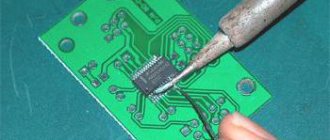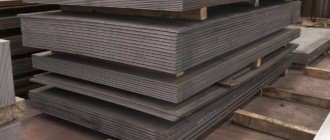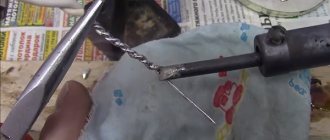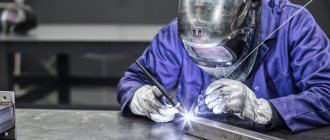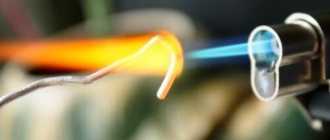Super-mirror polishing of stainless steel is the latest service in the metal processing industry. It is available only in a few regions of the country.
We have already completed orders for polishing stainless steel products for clients from St. Petersburg, Nizhny Novgorod, Kazan, Pskov, Veliky Novgorod, Moscow, Ivanovo and other Russian cities! We worked with automobile concerns, designers and design studios, and large chain stores. Each of our clients was satisfied with the polishing result.
What are the advantages of electropolishing
Electropolishing is a new technique that has already proven itself brilliantly on the market:
- Can polish different metals;
- Necessary when applying vacuum coatings to products;
- Gives better resistance to corrosion;
- This treatment gives status to the product;
- Ideal style, design, and status of the product;
- Parts can be polished in absolutely any shape;
- The minimum possible level of roughness is achieved.
Electrochemical polishing in the fight against corrosion
It is known that chemical-based electropolishing is often used to clean parts affected by corrosion.
This is possible if the rusting process has not gone too far and has not touched the deep layers of the metal. Using this technology, it is possible to micro-clean the surface and eliminate the smallest and only incipient lesions. Even those that cannot be detected not only by the human eye, but also by ultra-precise technology. It’s a paradox, but the services of electrochemical polishing of stainless steel, which seemingly make the metal defenseless against corrosion, actually help it actively resist it. It is no coincidence that this technology is considered one of the passivation methods. The secret of the phenomenon may lie in the fact that more nickel and chromium particles are concentrated on the newly formed layer, although research in this area is still ongoing.
Essence of the method
- The polishing process occurs at operating voltages of 200…350 V.
- At voltages above 200 V, a very thin (from 50 to 100 μm) vapor-gas shell is formed near the anode.
- A zone of maximum electric field strength is formed on the microprotrusions of the surface of the part.
It has been proven that the quality of electroplasma polishing depends on the operating voltage.
| Minimum voltage threshold | IN |
| Stainless steels | 220 |
| Copper and copper-based alloys (bronze, brass) | 260 |
| Aluminum alloys | 270…290 |
| Titanium alloys | 280…300 |
Processing a part using the EPP method is an ideal preparation of the surface for the subsequent application of a layer of ion-vacuum coating (titanium nitride, etc.).
Chemical and electrochemical polishing of metals
Electrochemical and chemical polishing is used both for decorative surface treatment after coating and during the processing of parts.
Electrochemical polishing
With electrochemical polishing, the surface microrelief is much smoother than with mechanical processing.
The coatings obtained by electrochemical polishing are non-porous and finely crystalline, which helps reduce the coefficient of friction and makes it possible to impart special optical properties to parts. During electrochemical polishing, the metal surface becomes shiny as a result of different rates of dissolution of microprotrusions and depressions.
The effect of electrochemical polishing is explained by the formation of a thin surface oxide film on the metal, which prevents etching. The thickness of the film is not the same on microprotrusions and microdepressions, as a result of which the solution during electrochemical polishing has a stronger effect on those areas where the film is thinner, i.e. on microprotrusions.
The quality of electrochemical polishing depends on the current density, electrolyte temperature, solution composition and electrolysis time.
The most widely used electrolytes based on phosphoric, sulfuric and chromic acids. To increase the viscosity of solutions, glycerin and methylcellulose are introduced. Sulfureide, triethanolamine, etc. are added to electrolytes for electrochemical polishing as etching inhibitors.
Chemical polishing
The chemical polishing method has much in common with the electrochemical polishing method. The appearance of shine on the surface of parts here, as with electrochemical polishing, is also associated with the presence of a thin film that prevents etching in the metal recesses.
The preferential dissolution of protrusions during chemical polishing is achieved both due to their increased chemical activity and due to the higher rate of diffusion of metal ions and fresh electrolyte.
Electrochemical polishing of steel parts.
Comparative characteristics of electrochemical and chemical polishing processes
The main advantages of the electrochemical polishing process are high productivity, good adhesion of galvanic coatings to the electropolished surface, and the ability to eliminate the degreasing operation necessary for mechanical polishing.
The disadvantages of the electrochemical polishing process include the need to frequently change electrolytes due to the lack of a universal one for various metals; the need for mechanical polishing of the surface before electrochemical polishing; increased energy consumption.
The advantage of chemical polishing over electrochemical polishing is that it does not require the use of constant power sources. Chemical polishing is mainly applied to brass or aluminum parts of any complex configuration and size that do not require a mirror finish.
The disadvantages of chemical polishing compared to electrochemical polishing are lower gloss, greater aggressiveness of solutions and their fragility.
Compositions of electrolytes for chemical and electrochemical polishing of metals
Most electrolytes for electrochemical polishing of steel are based on mixtures of solutions of orthophosphoric and sulfuric acids with the addition of chromic anhydride.
Electrochemical polishing electrolyte containing 500–1100 g/l phosphoric acid, 250–550 g/l sulfuric acid and 30 g/l chromic anhydride is universal for electrochemical polishing of all types of steel, including 12Х18Н9Т. Electrochemical polishing mode: temperature 60–800C, current density 15–80 A/dm2, time 1–10 minutes.
For electrochemical polishing of steel 12Х18Н9Т it is possible to use electrolytes containing surfactants. Metal removal during electrochemical polishing occurs more intensively in the electrolyte: phosphoric acid 730 g/l, sulfuric acid - 580–725, triethanolamine 4–6 g/l, catapine 0.5–1.0 at 60–800C, current density 20–50 A /dm2, time 3–5 minutes.
Chemical polishing of steel , in contrast to electrochemical polishing, is used less frequently, although it is easier to use and has a number of advantages. The solution for chemical polishing of steel 12Х18Н9Т contains (g/l): sulfuric acid 620–630, nitric acid 60–70, hydrochloric acid 70–80, sodium chloride 1-12, acid black dye 3M 3–5. Temperature 70–750C, time 5–10 minutes.
For electrochemical polishing of copper and its alloys, solutions of phosphoric acid with chromic anhydride are used: phosphoric acid 850–900 g/l, chromic anhydride 100–150 g/l, temperature 30–400C, current density 20–50 A/dm2.
Chemical polishing of copper is carried out in a solution (g/l) of phosphoric acid 930–950, nitric acid 280–290 and acetic acid 230–260 at room temperature (as opposed to electrochemical) for 1–5 minutes.
Electrochemical polishing of aluminum and its alloys occurs when the rate of dissolution of the oxide film on the surface exceeds the rate of its formation.
The electrochemical polishing electrolyte contains a mixture of phosphoric acid (730–900 g/l), sulfuric acid (580–725 g/l) and surfactant (triethanolamine 4–6 g/l, catapin BPV 0.5–1.0 g/l).
Electrochemical polishing mode: temperature 60–800C, current density 10–50 A/dm2, time 3–5 minutes.
For electrochemical polishing of aluminum with high silicon content, the following composition (mass fractions) is recommended: hydrofluoric acid 0.13; glycerin 0.54; water 0.33. temperature 20–250C, current density 20 A/dm2, time 10–15 minutes.
Chemical polishing of aluminum wrought alloys is carried out in a solution of phosphoric acid 1500–1600 g/l with the addition of ammonium nitrate 85–100 g/l at 95–1000C for up to 5 minutes.
Electrochemical polishing of nickel is carried out in an electrolyte: 1000-1100 g/l of sulfuric acid at 20-300C and a current density of 20-40 A/dm2 for 2 minutes.
The quality of electrochemical and chemical polishing of parts, like all galvanic processes, depends on surface preparation (see “First steps in electroplating, part 2.”) and the accuracy of technological operations (composition of electrochemical polishing electrolyte, process modes).
When performing electrochemical and chemical polishing processes, safety precautions must be observed (see “Safe electroplating”).
For the development of new electrochemical technologies, please contact us.
Attention! Electroplating training course! Find out more...
- "Anodizing aluminum."
- "Decorative coatings."
Why is electropolishing better than regular polishing?
In addition to the visual effect, electrolytic plasma polishing outperforms mechanical polishing in terms of the final characteristics of the product and its processing.-
Technical characteristics of the surface after treatment:
A minimum surface roughness of R=0.03…0.02 µm is achieved. The surface cleanliness class is increased to maximum 14 (mirror polishing).- Polishing removes burrs up to 0.3 mm in height.
- The use of EPP cleans the surface of the part from inclusions of abrasives.
- Electric pulse polishing removes the effects of welding from the surface - tarnished color.
- Improves surface resistance to metal corrosion
Within a few minutes of processing, the part acquires a mirror shine. The technique has been developed for the use of electrolyte-pulse polishing of parts made of stainless steel, copper-based alloys (brasses and bronzes of various compositions), aluminum, titanium - bringing the surface to a mirror shine. In relation to chromium steels of the stainless class, grades 201, 304, 316, 321 according to the AISI classification (from 08Х18Н10 to 12Х18Н10Т, 12Х15Г9НД), the more chromium in stainless steel, the better the “mirror effect”.
The essence of electrochemical polishing
When electropolishing, the surface of the product undergoes an anodic dissolution procedure.
In places of increased roughness, where there are protrusions, the reaction is more intense: the process of rapid dissolution begins. In places of depressions, the process, on the contrary, is slowed down. The appearance of the mirror effect is explained precisely by the non-uniform reaction rate. Many people imagine electrochemical polishing of stainless steel as a procedure that “competes” with mechanical processing: grinding, blasting, etc. In fact, these technologies do not compete, but rather accompany each other. And if the same grinding helps to level the surface of the metal and overcome its excessive roughness, electrochemical polishing is a service that gives the product aesthetic characteristics.
Advantages and disadvantages of technology
Thus, electrochemical polishing of stainless steel in Moscow helps to increase its mechanical and anti-corrosion strength.
With its help, you can process parts of complex shapes without disturbing their outlines. This is a fairly economical process in terms of time spent, and also has high productivity. As for the dimensions of the workpiece, they can only be limited by the dimensions of the bath itself. However, electrochemical polishing is not a budget service, and there are good reasons for this. Firstly, different types of materials, and especially unyielding stainless steel, require different approaches to composing the solution. Since electric current is a direct participant in the process, energy losses are inevitable. The electrolyte itself also requires periodic renewal.
It should be noted that electrochemical polishing in Moscow is only possible for parts that do not have a significant error on the surface: deep cracks and depressions cannot be hidden by this process.
Why should you order electrochemical polishing from us?
Despite the shortcomings, the technology of electrochemical polishing in Moscow does not lose popularity. Evidence of this is the number of our clients, which is growing every month. You, too, can become our regular customer and take advantage of preferential prices for the service depending on the volume and complexity of the project. Cooperation with us means:
- always reasonable prices for electropolishing;
- perfectly smooth surfaces of products with a durable mirror effect;
- high speed of work, scrupulous adherence to deadlines;
- no defects;
- reliable protection of products from corrosion.
And all this within one production. Contact us!



